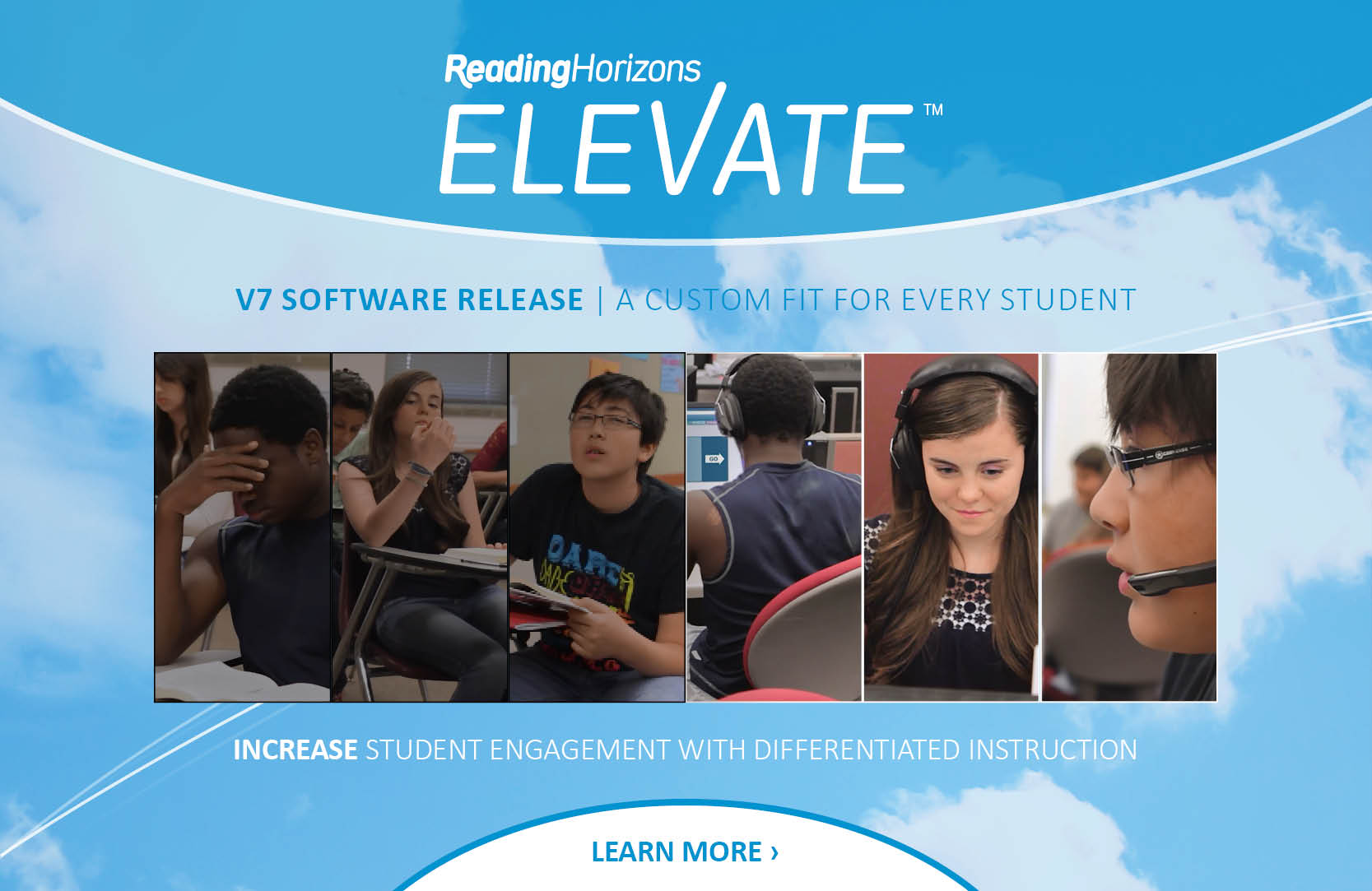Using Blended Learning to Differentiate Reading Instruction
 Each year, teachers welcome a diverse group of students into their classrooms. Some students are high achievers, absorbing everything they read and hear and performing well at nearly everything they do. Others are average, on-level students. And still others are struggling to keep up for a variety of reasons—physical, linguistic, economic, social, familial, historical—or are simply failing.
Each year, teachers welcome a diverse group of students into their classrooms. Some students are high achievers, absorbing everything they read and hear and performing well at nearly everything they do. Others are average, on-level students. And still others are struggling to keep up for a variety of reasons—physical, linguistic, economic, social, familial, historical—or are simply failing.
It is no use lamenting the fact that the students in the class have such a wide range of knowledge and abilities. Fair or not, all of those students are expected to perform to standards, and the teacher is expected to handle how they get there—often doing so with few resources, overcrowded classrooms, and unrealistic educational benchmarks. That is the reality of the classroom today.
So, the teacher does the best he or she can, trying to provide effective and meaningful reading instruction to the whole class and scooping up whatever moments of spare time are available to identify any individual student difficulties and differentiate the reading instruction.
There are inherent problems with this model. First, it is designed for passive learning, which minimizes student interest, attention, and engagement. Second, because the teacher is spending most of the class delivering the same reading instruction at the same pace to students of vastly different levels, there are going to be students at the highest and lowest literacy levels whose needs aren’t being met. That means high-performing students who become bored and distracted, and low-performing students who become frustrated or scared, drift further back from their peers, or worse, just simply give up. And because there is little spare time to work with each student one on one, it is less likely that the teacher has all the information needed to adequately differentiate instruction and target it to address real, critical problem areas in reading.
It is probably unrealistic to expect most schools to change this classroom model or the student makeup of their classrooms anytime soon, but that doesn’t mean that there aren’t better ways to address the challenges their teachers face now. In fact, one of the most promising developments in the field of education, blended learning, may offer the best opportunity to improve learning for all students, while helping teachers better differentiate reading instruction.
What Is Blended Learning?
In their book Blended: Using Disruptive Innovation to Improve Schools, authors Michael B. Horn and Heather Staker describe blended learning in the following way:
“…a formal education program in which a student learns at least in part through online learning with some element of student control over time, place, path, and/or pace and at least in part at a supervised brick-and-mortar location away from home. The modalities along each student’s learning path in a course or subject are connected to provide an integrated learning experience.”1
There are a variety of blended learning models to choose from, but there are three elements common to every model: increased student control of/responsibility for learning; a shift in the role of the teacher from knowledge provider to learning facilitator, coach, and mentor; and the use of software or online learning for a portion of students’ educational experience.*
Students as Active Learners
With blended learning, students assume greater control and a more active role in their education. Depending on the model the school chooses to implement, students can make choices for how to learn content, where to learn it, which path to take to learn it, and how quickly to move through it—but the content all students have to learn remains the same.
Students can build reading skills in a variety of ways, including through direct instruction led by a teacher, computer-based instruction, whole-class discussion, small-group instruction and discussion, hands-on activities, inquiry- and project-based learning, paper-pencil work, modeled reading, independent reading, in-class “homework,” and tutoring, to name a few. But whichever form learning takes, part is done in the classroom with the teacher and/or fellow students, and part is done by the student working at a computer, whether in school or at home.
Teachers as Learning Facilitators, Coaches, and Mentors
As students become more self-reliant, active learners, teachers shift from knowledge providers to learning facilitators, coaches, and mentors. Instead of having to use all of the class time to present instruction to the whole class, teachers are freed up to circulate among students, observe them more closely, and pick up on problems they might not have noticed from the front of the class. Teachers have more time to work with individuals or groups of students at similar levels, helping ensure that those who are struggling get immediate feedback and targeted support, and those who have already mastered a concept are adequately challenged while the rest of the students are still learning it. With increased face-to-face, teacher-student interaction, teachers can also develop stronger, more trusting relationships with their students and learn more about them as individuals.
Computer-Based Learning as a Source of Data to Use for Differentiation
Because computer-based learning is an essential part of blended learning, students receive a varied yet regular stream of hands-on experiences with technology that improve and increase their digital fluency, making them better prepared for further academic work and their future careers.
But there are other benefits to students that computer-based learning offers.
Many students find it motivating and exciting. One reason that struggling students in particular like it is that they don’t have to fret about how they perform in front of peers. Learning independently using software helps them maintain their dignity and boosts their self-confidence.
Many educational software programs now are adaptive, using students’ answers and input to shape the pace, path, and depth of instruction. This adaptivity provides the ultimate personalized learning experience in that students can zip through content they have already mastered and instead focus their time and attention on areas of individual weakness.
But computer-based learning is not only beneficial to students; it also can be a valuable source of information for teachers. From student activities done online and computer-based assessments, software programs can compile data on individual students as well as on entire classes or schools. That data can provide highly detailed information on each student that a busy teacher may not have the luxury of gathering personally. Data can show, for example, that a student has mastered individual sound-letter correspondences but is struggling with Digraphs or Murmur Diphthongs. The data can then be used to adjust instruction so it is targeted to address gaps in that student’s reading skills. Reporting systems can allow teachers to view student progress through the lessons and alert teachers to potential problems.
Additionally, when a reading program includes a software component, teachers are in a better position to ensure that all of the work students are doing on the computer is on topic, satisfying educational objectives, and integrating seamlessly with the teacher-led instruction.
***
By being open to changing the means of learning and the roles and responsibilities of students and teachers, and by harnessing technology to provide teachers with the data they need to provide effective differentiated instruction, we can create a win-win environment for everyone.
Notes
1. Michael B. Horn and Heather Staker, Blended: Using Disruptive Innovation to Improve Schools (San Francisco, CA: Jossey-Bass, 2014), 54.
* It’s important to note that using technology in the classroom does not make that classroom a blended learning environment. To learn more about blended learning, click on the following link:
www.readinghorizons.com/blended-learning ›
